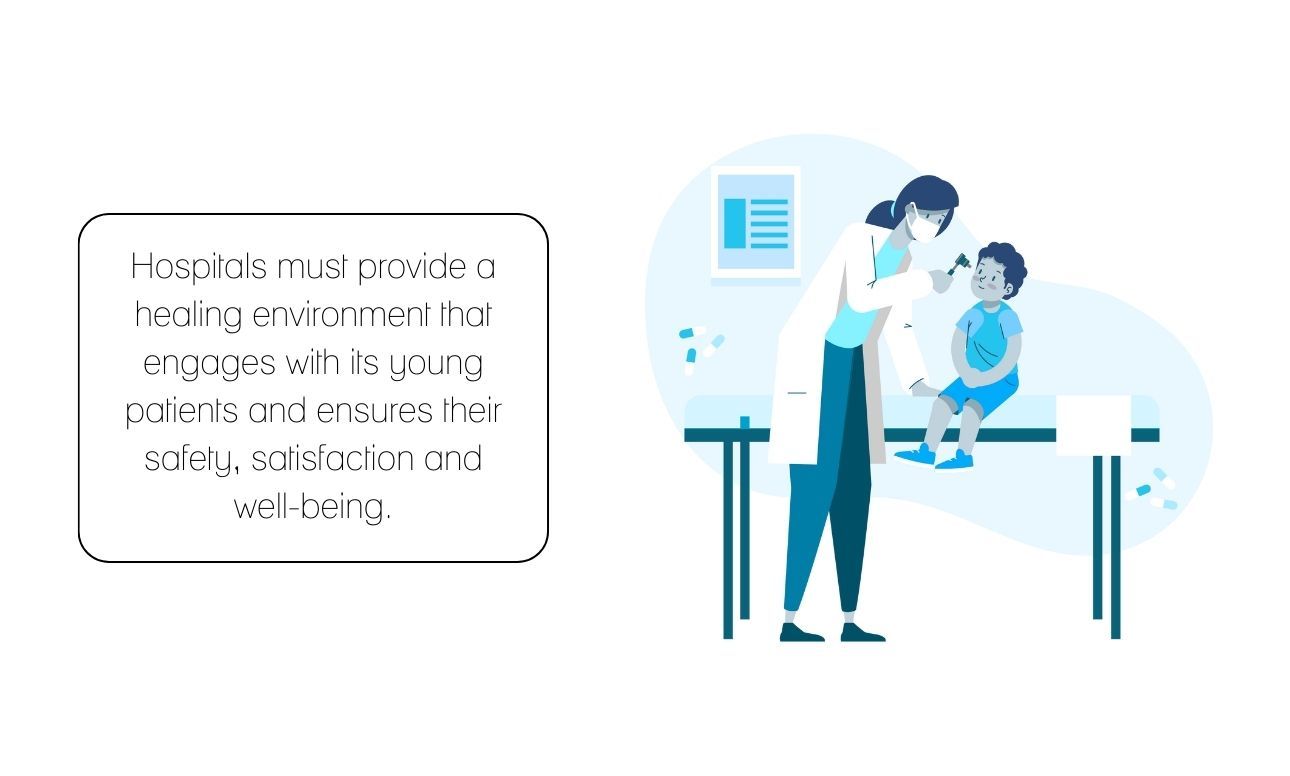

23-12-2022
Designing Hospitals for Children Ravideep Singh

How healthcare design can help improve children’s health
Healthcare spaces are designed to cater to people of all age groups; a standardised design approach may only be conducive to some patient categories. Hence, a patient-centric approach can help create suitable environments. Patient centrism as a principle allows caregivers to curate specialised and informed healthcare experiences for a broad genre of patient types. Therefore, it is critical to acknowledge that each patient category necessitates a carefully curated healthcare experience that focuses on the specific needs of the particular patient type.
Hospitals and clinics for children require design measures and strategies that consider their specific needs. They exhibit distinct behaviour traits and perceive their immediate environment differently than adults. Therefore, it is important to study their interaction with spatial design. This study should translate into design strategies that align with the children’s perception of healthcare spaces.
Studies suggest that children develop familiarity with basic shapes, nature and trees, and colours between the age of three and fourteen. Therefore, including functional and visual elements in healthcare spaces can enhance the well-being of young patients. Such elements can be incorporated into the design of paediatric clinics and hospitals. For instance, our design for Santosh Children’s Hospital, Ghaziabad, has an exterior that emulates a tree's organic form, making the hospital building emerge as a striking green manifestation of an urban sapling. The facade is designed to pique young patients' interest and steer them away from their mindset of hospitals as intimidating buildings.
Designing patient-centric healthcare spaces require incorporating psychoneuroimmunology in the design, which acknowledges the relationship between human psychology and the human body. Furthermore, the design process should also accommodate the use of responsive colours, textures and anthropometric elements that comfort the specific patient types. Generally, children show an affinity towards vibrant spaces. Therefore, a paediatric healthcare space should be rendered with a balance of colourful yet calming tones. We designed engaging interiors for Santosh Children’s Hospital by incorporating vibrant colours, forms and organic movement patterns. Spaces are rendered in careful combinations of vibrant orange and calming blue to achieve the equilibrium of vivid and soothing interiors. Such a colour palette instils a playful vibe that breaks away from an intimidating clinical environment for children.
With the proposition that children perceive spaces differently than adults and are more sensitive to the environments around them, hospitals must provide a healing environment that engages with its young patients and ensures their safety, satisfaction and well-being.













